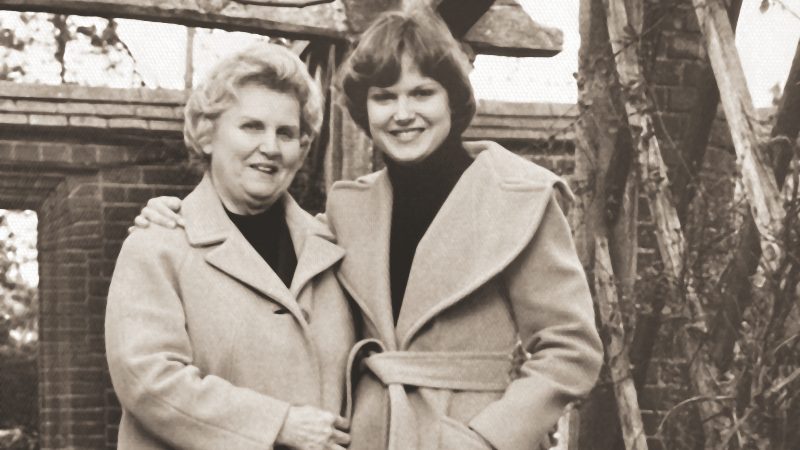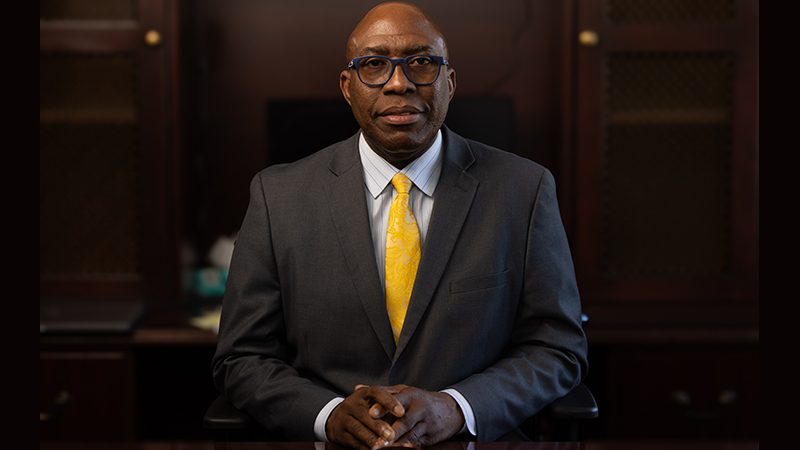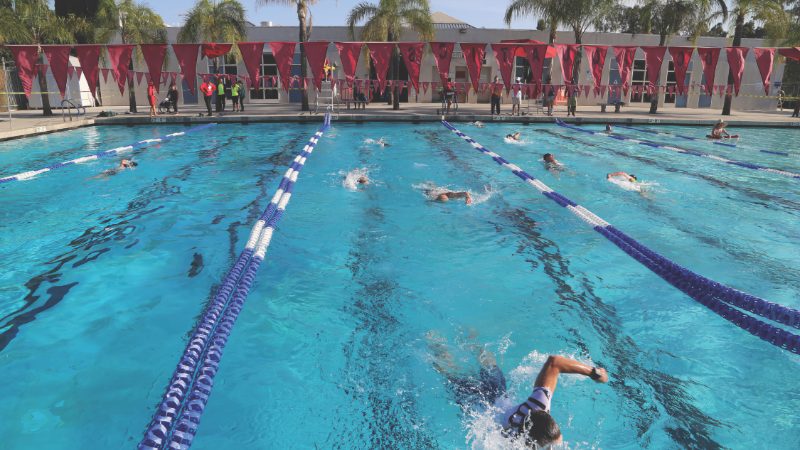By the Recorder editorial staff
The Hawaiian Islands were formerly known as the Sandwich Islands. Visited by Captain James Cook in 1778, he named them after John Montagu, 4th Earl of Sandwich. The name Hawaii came into use later. Ellen White still referred to them as the Sandwich Islands in 1892.
Adventist work in Hawaii began in 1884 when Abram La Rue and Henry Scott went at their own expense to do missionary work and sell books. Pioneer and historian John Loughborough records: “This awakened such an interest on the island that the General Conference, in November, 1885, voted that Elder Wm. Healy go the next season to Hawaii to labor, and that the California Conference be requested to loan a tent for this purpose. Thus equipped Elder Healy and those already on the island conducted a tent-meeting during the summer of 1886. As the result of this effort a number of persons accepted the message. Mr. La Rue remained in Honolulu till the year 1889, when he set sail for Hong Kong, China.”1
W.M. Healey arrived in Honolulu on Dec. 27, 1885, with his wife and 10-year-old daughter. To save money, they had traveled steerage class (no cabin) for $25 each. He began evangelistic meetings on Jan. 15, 1886, in a 50-foot tent pitched on the corner of Vineyard and Fort streets. The meetings were attended by the many interested people gathered by the two literature evangelists. Healey left Honolulu four months later, having baptized nine.

A.J. Cudney followed Healey to Honolulu, and on July 22, 1888, he organized the nine charter members as the first Adventist church in Hawaii. However, this was not reported to the General Conference because nine days later he set sail for Pitcairn Island—and he and his ship never arrived, all being lost at sea. Consequently, the church was not recognized until its reorganization in 1896.
Writing from England in 1896, E.J. Waggoner provided the following information: “A report from the Hawaiian Islands says that our friends in Honolulu are just starting a sanatorium, with a medical missionary in charge. The Chinese work in the islands is prospering, and some natives connected with the mission are expecting soon to return to China to work.”2
Diversity
Three years later, Baxter L. Howe also gave an enthusiastic report that, aside from the glowing language, also shows the potential among such a diverse population:
“There is hardly any nationality that is not represented in the Hawaiian Islands. These are constantly coming and going from all parts of the world. As they stop there, we have the opportunity of simply meeting them, and then they pass on.
“But there are many with whom we have more than this passing contact. Perhaps you know that we have a Chinese school established on the island of Oahu, also one in Hilo, and that we are endeavoring to do what we can for those people whom God has permitted to be there in such large numbers.…
“If there is one thing in all the islands of Hawaii that touches my heart more than others, it is the condition of the poor native people. The gospel has been brought to them. Some have accepted it with all their great, free, loving nature. But what was given them was not the true gospel of Jesus Christ.… They fear God, and worship idols.…
“Now I say that we must have something for these people, something that we can take to them, and that they can comprehend, that will lead them step by step out of this condition into the glorious light of the gospel of Jesus Christ.
“Our work among the English-speaking people has been most encouraging to us. It has not shown very largely in reports; but I want to say that there is an open door in the homes of the English-speaking people in the islands of Hawaii to-day.”3
There is hardly any nationality that is not represented in the Hawaiian Islands. These are constantly coming and going from all parts of the world.
It was the newly formed Pacific Union Conference that, once it was formed, immediately sent workers to Hawaii (as well as to Arizona and Alaska).4
In 1903, the report was of 37 members among a population of 154,000, made up of native Hawaiians, Americans, Chinese, Japanese, and Portuguese.5
Ellen White visits

On her way to Australia in 1891, Ellen White’s ship stopped in Honolulu for 19 hours. She wrote extensively of her experience in the Review and Herald. The article began, “One week from the time we left California we reached the Sandwich Islands. The scene presented to us from the steamer as we approached Honolulu, was very beautiful… Our steamer was not to leave Honolulu till past midnight, and at the earnest desire of our friends I had consented to speak in the evening. The hall of the Young Men's Christian Association was secured for the purpose. Only a few hours' notice of the meeting could be given, yet a goodly number were assembled, among them many who were actively interested in temperance and Christian work. I spoke from 1 John 3:1-4, dwelling upon the great love of God to man, expressed in the gift of Jesus that we might become children of God. The Spirit of the Lord was present with us.”6
On her return from Australia, she also stopped in Honolulu on Sept. 14, 1900. She recorded her visit: “About eight o'clock this morning we steamed into the harbor. Elder Baxter Howe was at the wharf to meet us, and gave us a hearty welcome. He took us in a carriage to Sister Kerr's, where we were most heartily welcomed, and where we sat down to a bountiful meal, which we all greatly enjoyed.
“In the afternoon we visited the sanitarium, and were very much pleased with the location. Then we met with a large number of our people at the church, where I spoke for about forty minutes and Willie for about thirty minutes. It was a great privilege to meet with these brethren and sisters, and we wished that we could spend two or three weeks with them. But this would be impossible.
“At the close of the meeting we visited the Chinese school.… We see a large field of work for this school, which should be more fully developed. Thus missionaries can be prepared to go to China and labor for their countrymen.”7
_____________________________
1. J.N. Loughborough, The Great Second Advent Movement (Washington, DC: Review and Herald Pub. Assn., 1905), p. 440.
2. E. J. Waggoner, “Back Page,” The Present Truth, Aug. 27, 1896, p. 560.
3. “The Hawaiian Mission Field,” General Conference Bulletin, vol. 4, April 16, 1901, pp. 279-280.
4. “The Pacific Union Conference,” General Conference Bulletin, vol. 4, July 1, 1901, p. 514.
5. “Report of the President, W.T. Knox,” General Conference Bulletin, vol. 5, April 2, 1903, p. 49.
6. Ellen G. White, “On the Way to Australia: Visit to Honolulu,” Review and Herald, Feb. 9, 1892, p. 81.
7. Ellen G. White, “Reflections While Crossing the Pacific,” Manuscript Releases, no.1427, Sept. 14, 1900, pp. 33-34.
Pioneros adventistas en el oeste: Tocando corazones en Hawaii para Jesús
Por el personal editorial del Recorder
Las islas hawaianas eran conocidas anteriormente como las Islas Sandwich. Visitadas por el capitán James Cook en 1778, las nombró en honor a John Montagu, 4º Conde de Sandwich. El nombre Hawaii entró en uso más tarde. Ellen White todavía se refería a ellas como las Islas Sandwich en 1892.
La obra adventista en Hawaii comenzó en 1884 cuando Abram La Rue y Henry Scott fueron a sus expensas para hacer obra misionera y vender libros. El pionero e historiador John Loughborough registra: «Eso despertó tal interés en la isla que la Conferencia General, en noviembre de 1885 votó que el pastor Wm. Healy fuese la siguiente temporada a Hawaii para trabajar, y que se pidiese a la California Conference que prestase una carpa de campaña para ese propósito. De esa manera, el pastor Healy y los que ya estaban en la isla llevaron a cabo una reunión en carpas de campaña durante el verano de 1886. Como resultado de ese esfuerzo, varias personas aceptaron el mensaje. La Rue permaneció en Honolulu hasta el año 1889, cuando zarpó hacia Hong Kong, China.1
W. M. Healey llegó a Honolulu el 27 de diciembre de 1885, con su esposa y su hija de 10 años. Para ahorrar dinero, habían viajado en tercera clase (sin cabina) por $25 cada uno. Comenzó las reuniones evangelísticas el 15 de enero de 1886, en una carpa de 50 pies instalada en la esquina de las calles Vineyard y Fort. A las reuniones asistieron muchas personas interesadas invitadas por los dos colportores. Healey dejó Honolulu cuatro meses después, habiendo bautizado a nueve personas.

A. J. Cudney siguió a Healey a Honolulu y el 22 de julio de 1888, organizó a los nueve miembros como la primera iglesia adventista en Hawaii. Sin embargo, eso no se informó a la Conferencia General porque nueve días después zarpó hacia la isla de Pitcairn, su barco nunca llegó, todos se perdieron en el mar. En consecuencia, la iglesia no fue reconocida hasta su reorganización en 1896.
Escribiendo desde Inglaterra en 1896, E. J. Waggoner proporcionó la siguiente información: «Un informe de las islas hawaianas dice que nuestros amigos en Honolulu están comenzando un sanatorio, con un médico misionero a cargo. El trabajo chino en las islas está prosperando y algunos nativos relacionados con la misión esperan regresar pronto a China para trabajar».2
Diversidad
Tres años más tarde, Baxter L. Howe también dio un informe entusiasta que, aparte del brillante lenguaje, también muestra el potencial entre una población tan diversa:
«Casi no hay nacionalidad que no esté representada en las islas hawaianas. Van y vienen constantemente de todas partes del mundo. Cuando se detienen ahí, tenemos la oportunidad de simplemente conocerlos, y siguen de paso.
«Pero hay muchos con los que tenemos más que ese contacto pasajero. Tal vez sepan que tenemos una escuela china establecida en la isla de Oahu, también una en Hilo, y que estamos tratando de hacer lo que podemos por aquellas personas a quienes Dios ha permitido que estén ahí en tan gran número.
«Si hay algo en todas las islas de Hawaii que me toca el corazón más que otra, es la condición de los pobres nativos. El evangelio ha sido llevado a ellos. Algunos lo han aceptado con toda su naturaleza libre y amorosa. Pero lo que se les dio no fue el verdadero evangelio de Jesucristo... Temen a Dios y adoran a ídolos...
«Ahora digo que debemos tener algo para esas personas, algo que podamos llevarles y que puedan comprender, que los guíe paso a paso fuera de esa condición a la gloriosa luz del evangelio de Jesucristo.
«Nuestro trabajo entre las personas de habla inglesa ha sido muy alentador para nosotros. No se ha mostrado en gran medida en los informes; pero quiero decir que hay una puerta abierta en los hogares de las personas de habla inglesa en las islas de Hawaii hoy en día».3
«Casi no hay nacionalidad que no esté representada en las islas hawaianas. Van y vienen constantemente de todas partes del mundo»
Fue la recién formada Pacific Union Conference la que, una vez que se formó, envió inmediatamente obreros a Hawaii (así como a Arizona y a Alaska).4
En 1903, el informe era de 37 miembros entre una población de 154.000, compuesta por nativos hawaianos, estadounidenses, chinos, japoneses y portugueses.5
Visita de Ellen White

En su camino a Australia en 1891, el barco de Ellen White se detuvo en Honolulu durante 19 horas. Escribió extensamente sobre su experiencia en la Review and Herald. El artículo comenzaba: «Una semana después de la salida de California llegamos a las Islas Sandwich. La escena que se nos presentó desde el barco de vapor cuando nos acercamos a Honolulu, fue muy hermosa... Nuestro barco de vapor no debía salir de Honolulu hasta pasada la medianoche y por el sincero deseo de nuestros amigos había consentido en hablar por la noche. El salón de la Asociación Cristiana de Jóvenes fue asegurado para ese propósito. Sólo se pudo avisar con unas pocas horas de antelación de la reunión, sin embargo, se reunió un buen número, entre ellos muchos que estaban activamente interesados en la templerancia y la obra cristiana. Hablé de 1 Juan 3:1-4, pensando en el gran amor de Dios al hombre, expresado en el don de Jesús para que pudiésemos llegar a ser hijos de Dios. El Espíritu del Señor estuvo presente con nosotros».6
A su regreso de Australia, también se detuvo en Honolulu el 14 de septiembre de 1900. Ella registró su visita: «Alrededor de las ocho de esta mañana entramos en el puerto. El pastor Baxter Howe estaba en el muelle y nos dio una calurosa bienvenida. Nos llevó en un carruaje a la casa de la hermana Kerr, donde fuimos muy cordialmente recibidos, y donde nos sentamos a disfrutar de una abundante comida, que todos disfrutamos mucho.
«Por la tarde visitamos el sanatorio, y quedamos muy satisfechos con la ubicación. Después nos reunimos con un gran número de nuestra gente en la iglesia, donde hablé durante unos cuarenta minutos y Willie durante unos treinta minutos. Fue un gran privilegio reunirnos con esos hermanos y hermanas, y deseábamos poder pasar dos o tres semanas con ellos. Pero eso era imposible.
«Al final de la reunión visitamos la escuela china... Vemos un gran campo de trabajo para esta escuela, que debería desarrollarse más plenamente. De esa manera, los misioneros pueden estar preparados para ir a China y trabajar para sus compatriotas».7
_____________________________
1 J. N. Loughborough, The Great Second Advent Movement (Washington, DC: Review and Herald Pub. Assn., 1905), p. 440.
2 E. J. Waggoner, “Back Page”, The Present Truth, 27 de agosto de 1896, pág. 560.
3 “The Hawaiian Mission Field,” General Conference Bulletin, vol. 4, April 16, 1901, pp. 279-280.
4 “The Pacific Union Conference,” General Conference Bulletin, vol. 4, July 1, 1901, p. 514.
5 “Report of the President, W.T. Knox,” General Conference Bulletin, vol. 5, April 2, 1903, p. 49.
6 Ellen G. White, “On the Way to Australia: Visit to Honolulu,” Review and Herald, Feb. 9, 1892, p. 81.
7 Ellen G. White, “Reflections While Crossing the Pacific,” Manuscript Releases, no.1427, Sept. 14, 1900, pp. 33-34.






